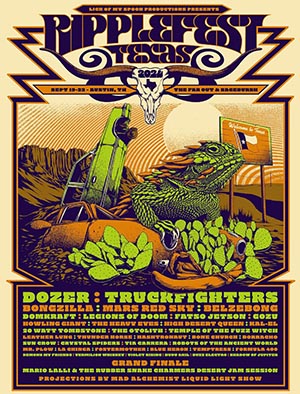Robert Smith aimed to create the ultimate fuck-off statement of despair and horrible guitar tones, and succeeded.
You’d think the cult legend of The Cure’s most extreme, uncompromisingly depressive album would have scared off all but a small hardcore group of dedicated fans. Originally dismissed and even ridiculed, they became, shortly after this release, an ace singles band that saw them cross over the the mainstream in a big way. And it just so happens there are a shitload of depressed people in all walks of life who can relate to this stuff. Hence we’ve got the highest consensus between the three polls I’ve been citing during this countdown — the #2 pick for both #5albums82 and Slicing Up Eyeballs, and #9 for Acclaimed Music, an aggregate of a wide range of mostly mainstream publications.
Their fourth album and final installment of the band’s oppressively downer gloom trilogy which included Seventeen Seconds (1980) and Faith (1981), Pornography’s subsequent popularity is still remarkable. Part of it is thanks to the fact that despite being on a verge of mental breakdown and band breakup amidst massive LSD and alcohol consumption, the band were at their top of their game in creative innovation. Originally interested in hiring famed German kosmische architect Conny Plank, who was unavailable, they ended up with producer/engineer Phil Thornalley (The Jam, Psychedelic Furs). Smith chose him particularly for the drum sound he achieved on the Furs’ Talk Talk Talk (1981). Thornalley was to play the Martin Hannett (Joy Division) role of experimenting with coaxing new sounds from their guitar/bass/drum setup, incorporating electronics as well as sampling techniques on the avant garde title track like Brian Eno was doing with the Talking Heads and David Byrne. It took some adjustment, as he fought with Smith over a horrible guitar sound, before realizing that’s exactly what they needed. The result, as dirgeful as it is, added a splash of psychedelic colour, from the nastiest palate possible mind you, to their previously stark, monochrome post-punk.
Some may be surprised to hear the early 80s post-punk, proto-goth scene as psychedelic because they are stuck in the cliched 60s flowers and sunshine paradigm. Echo & the Bunnymen, The Teardrop Explodes and the Soft Boys might have one foot planted in the 60s, but Joy Division, Section 25, The Sound, Comsat Angels and The Cure lurked in the dungeon like basements. Their psychedelia turned the lights out, except for perhaps a blacklight, illuminating only acidic neon colors and cum stains. Maybe in their case, more blood (Smith and Gallup wound end up physically fighting) and piss, as it seems like very little sex was happening in The Cure’s studio. The only reference to sex on the album is on “Siamese Twins,” a loveless encounter with a prostitute that results in a voodoo-style zombification. Their conceptualization of Pornography was more of the depraved nature of political systems that destroyed lives. There was a mountainous beer can sculpture that they forbid the cleaning crew from touching, and they were all squatting in the Fiction offices, spending 24/7 together, after having played shows nearly every day for a thousand days. The mood was strictly harrowing paranoia, existential anguish, alienation, despair.
The album kicks off with “One Hundred Years,” a visceral attack on the senses, referencing slaughtered pigs and an exploding head, lyrics that anticipate death metal bands like Carcass and Cannibal Corpse. “A Short Term Effect” sounds like U2 if they were held captive and enslaved for a year. “Hanging Garden” was the sole single, which is remarkable to think it could be marketable as more than an album track. The brutally booming drum sounds of Lol Tolhurst helped make it a potent sampler of even darker revelations to be found by those daring enough to dive into the album. “The Figurehead” is the towering black monolith of the album’s centerpiece. It’s not the sort of album you put on regularly, as you certainly have to be in a certain mood. But the fact that nothing from the album is overplayed increases its bracing impact with some intimate alone time spent on the headphones. It is without a doubt worthy of it’s top ten status, despite the stiff competition, as one of the greatest albums of 1982, and the 80s.
A lesser band would have imploded after that experience (the burnout, the drugs, negative reviews of the album, poor audience turnout on the subsequent tour, the fistfight), never to be heard from again. They might have remained as relatively obscure as The Sound and Comsat Angels, based on the transitional album The Top (1984), one of their weakest. However, they also began a string of killer pop singles with “Let’s Go to Bed,” “The Walk” and “The Lovecats” that guaranteed they’d be playing stadiums for the rest of their career. It also helped that the next three albums, The Head on the Door (1985), Kiss Me Kiss Me Kiss Me (1987) and Disintegration (1989) were all great. They transcended post-punk, psych and goth, and became their own iconic brand, towering over pretty much all British artists of their era, even The Smiths, and were inducted into the Rock & Roll Hall of Fame in 2019. Not bad for a bunch of weirdo, depressive outcasts.

#2 #5albums82
#2 Slicing Up Eyeballs
#9 Acclaimed Music

March 29, 2024
Fester’s Lucky 13: 1994
January 4, 2024
Fester’s Lucky 13: 1989
December 1, 2023
Fester’s Lucky 13: 2023 Year-End Summary



